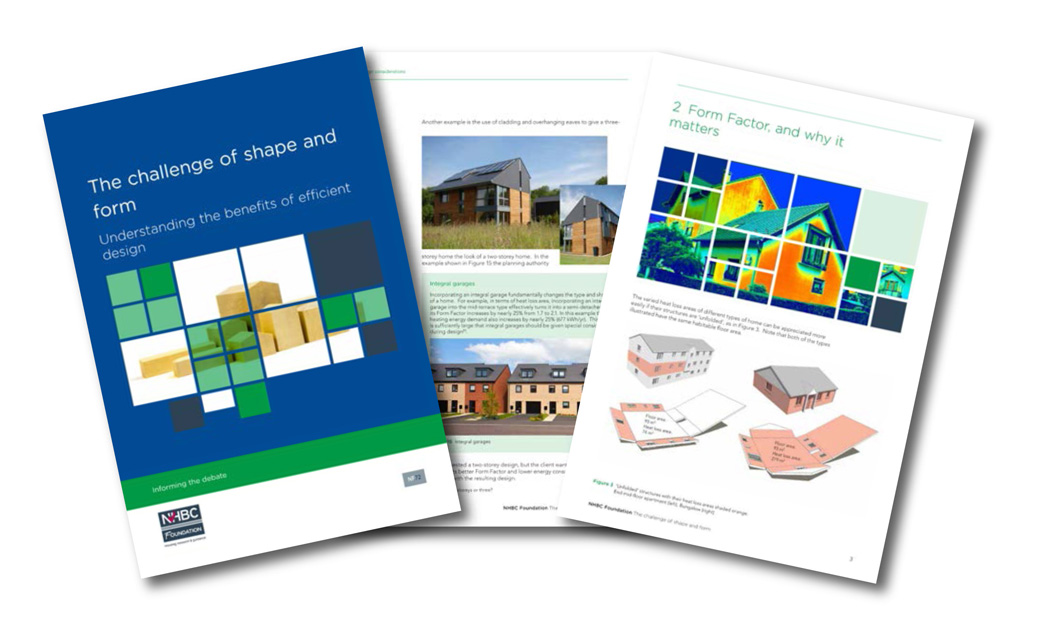
Energy demand in new homes could be halved if more focus is put on the shape and form of housing being built, according to the latest report from the NHBC Foundation.
The current Building Regulations methodology used to demonstrate energy/carbon compliance does not give credit for the energy efficiency inherent in simple forms of homes. There has also been little incentive for designers to use this as part of their low-energy strategies. This study shows that for the same floor area, the most efficient forms of housing such as mid-floor apartments, may have less than half the energy demand of the least efficient forms, detached homes and bungalows. Further improvements in energy efficiency can be demonstrated for simply shaped buildings (rectangular rather than ‘L’ or ‘T’ shaped).
The challenge of shape and form: Understanding the benefits of efficient design also shows that focusing on simple shapes does not mean homes have to be bland in their appearance. For example, using different materials can provide as much visual appeal as a complex shape. Additionally a consideration of shape and form can deliver energy efficiency without any increase in the cost of homes.
Neil Smith, head of research & innovation at NHBC, said: “Whilst further improvements to the energy efficiency standards of Building Regulations have been paused for the time being, the challenge of climate change will not go away. This report provides a useful insight into an approach which starts by considering the inherent efficiency of good shape and form before adding the fabric insulation and efficient services that area also needed.”
For more information and to download the publication, please visit: www.nhbcfoundation.org.








